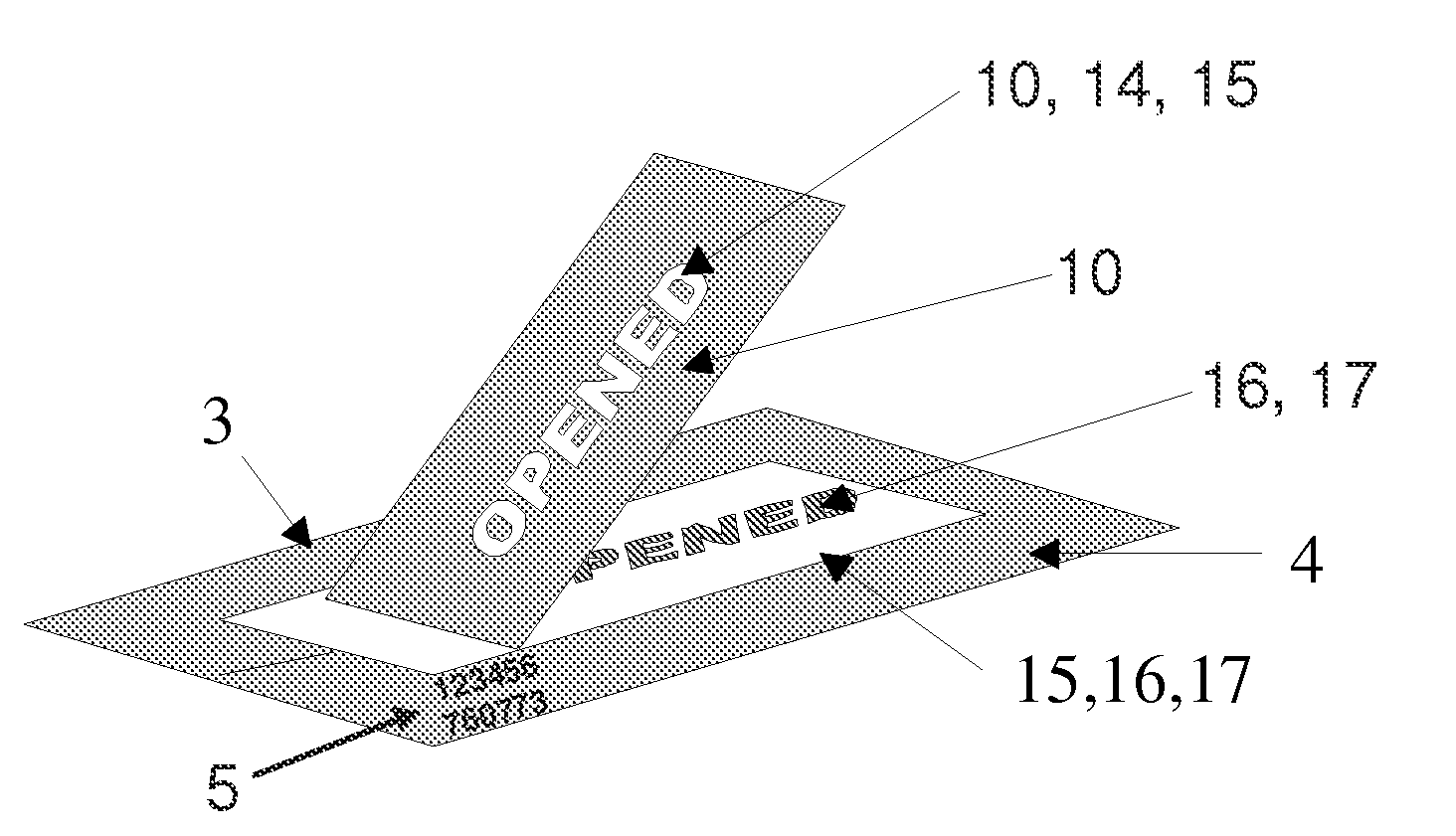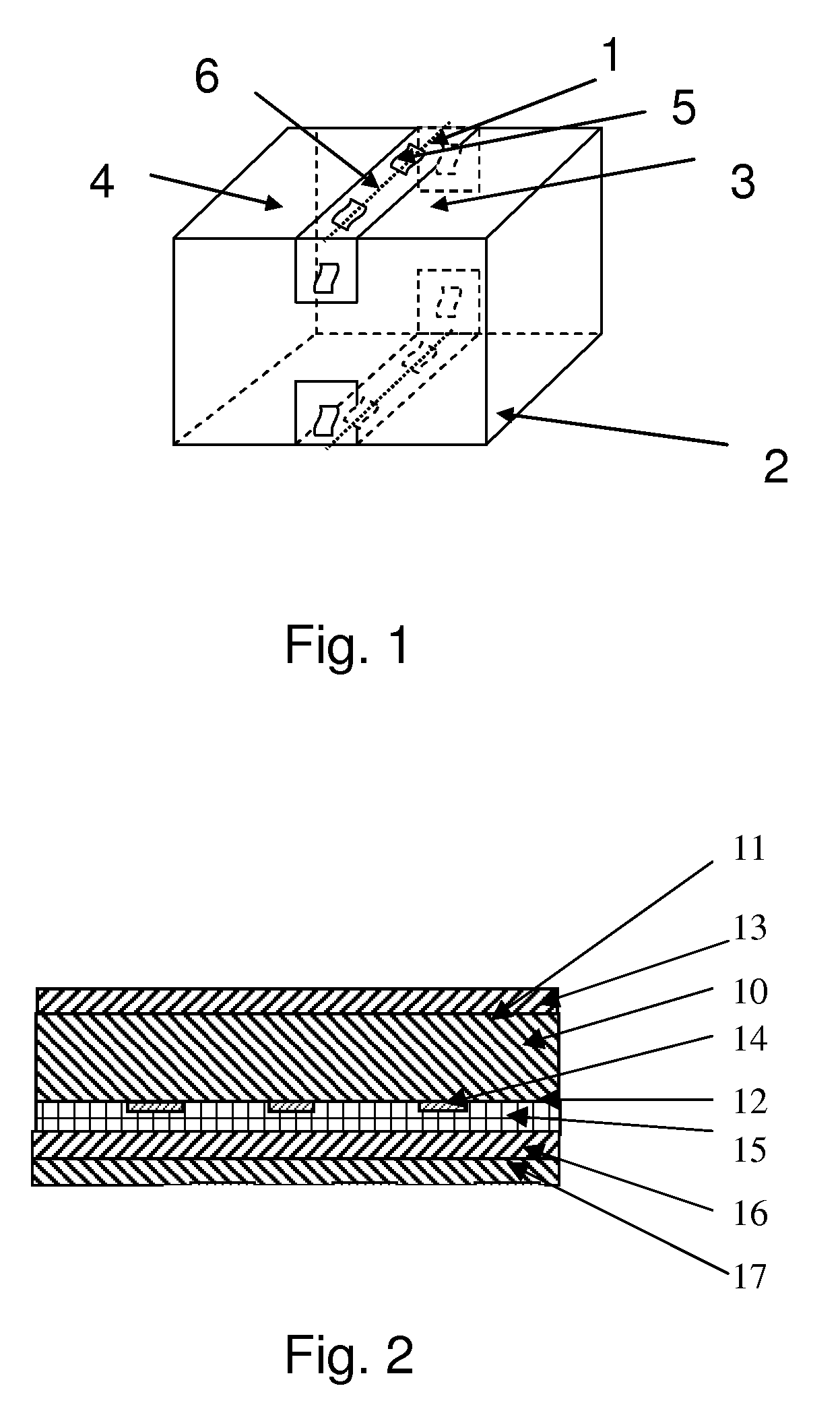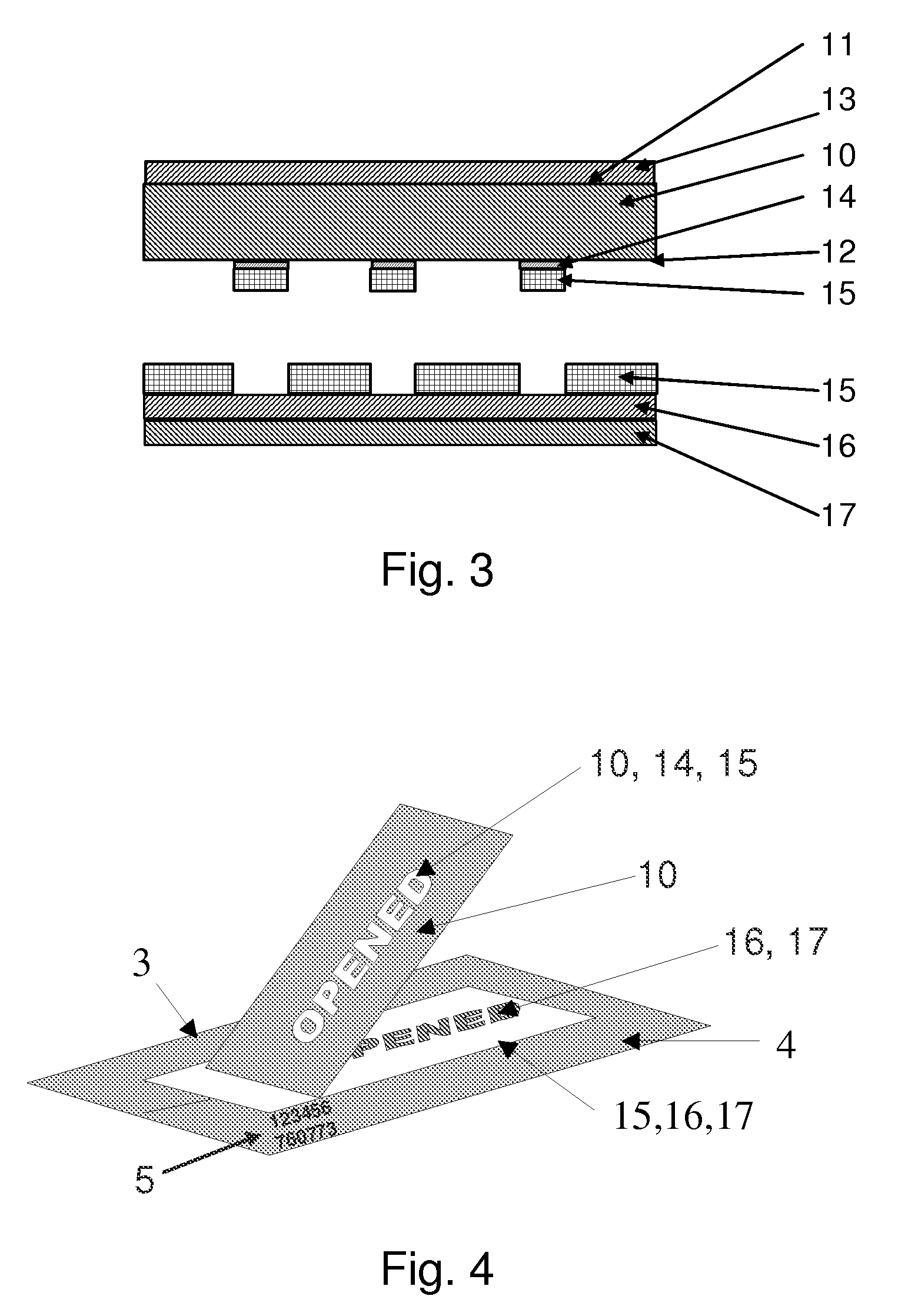Multi-layer adhesive closure
a multi-layer adhesive and closure technology, applied in the direction of identification means, film/foil adhesives, instruments, etc., can solve the problems of not being able to manipulate the secured article itself, such as the package, and achieve the effect of making manipulation within the logistics chain more difficul
- Summary
- Abstract
- Description
- Claims
- Application Information
AI Technical Summary
Benefits of technology
Problems solved by technology
Method used
Image
Examples
Embodiment Construction
[0033]The preferred embodiment of the invention is depicted as adhesive tape 1, which is used for the closing and securing a box or a package 2. The box or package 2 has upper lid flaps 3 and 4, which for the closing of the package 2 are folded down and meet at a line 6. In the usual way, the adhesive tape 1 is bonded on the top and bottom face of the package 2 across the line 6, and is adhered to the end faces of the package 2, in order to hold down the lid flaps 3 and 4 to close the package.
[0034]In order to gain access to the contents of the package 2 without drawing subsequent attention to the attempted opening, the adhesive tape 1 must be removed along line 6 for folding the lid flaps 3 and 4 up. If the adhesive tape 1 used on packages or boxes is a standard commercial adhesive tape, it is impossible, following removal of the contents from the package 2 and careful rebonding of the adhesive tape 1, to perceive that the adhesive tape 1 has been detached once already at an earlie...
PUM
| Property | Measurement | Unit |
|---|---|---|
| Adhesivity | aaaaa | aaaaa |
| Area | aaaaa | aaaaa |
| Fluorescence | aaaaa | aaaaa |
Abstract
Description
Claims
Application Information
 Login to View More
Login to View More - R&D
- Intellectual Property
- Life Sciences
- Materials
- Tech Scout
- Unparalleled Data Quality
- Higher Quality Content
- 60% Fewer Hallucinations
Browse by: Latest US Patents, China's latest patents, Technical Efficacy Thesaurus, Application Domain, Technology Topic, Popular Technical Reports.
© 2025 PatSnap. All rights reserved.Legal|Privacy policy|Modern Slavery Act Transparency Statement|Sitemap|About US| Contact US: help@patsnap.com



